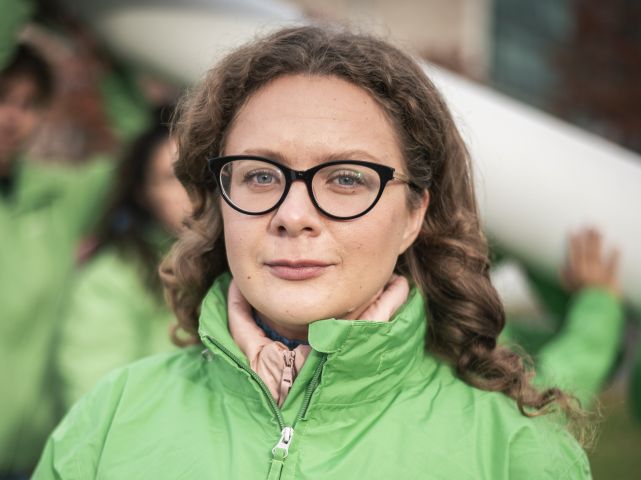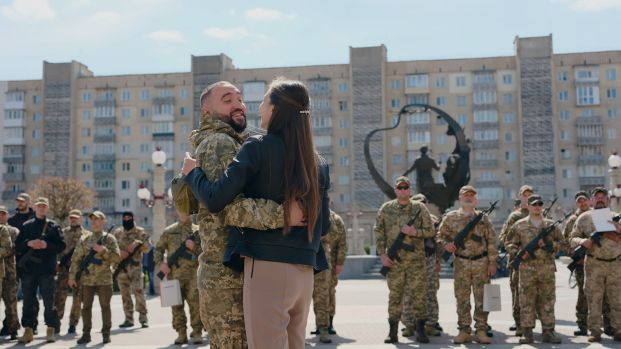
Last year, Greenpeace Central and Eastern Europe (CEE) launched a project in Ukraine that is working towards providing new clean technologies for the reconstruction of towns and villages. This is the story of a small hospital in Horenka that became an example of green reconstruction.
By Kateryna Bystrytska
The explosions began in Horenka on the morning of 24 February. That was how local residents learned about Russia’s invasion on the first day of the war. The alert system for air raids was not working, and people spent days in their basements. Although the Russian troops did not succeed in capturing Horenka, more than a hundred residents were killed in the attacks, and thousands had to flee their homes.
Local doctor Olena Opanasenko told us that the hospital in Horenka continued to operate despite the war raging outside. ‘I was at the hospital with another doctor. We continued to treat people,’ she recalls. ‘On 25 February 2022, the hospital’s power supply was cut off, and it wasn't restored until May.’ A Russian grenade struck in front of the clinic, blowing out the windows and damaging the building’s facade. The lack of electricity caused the heating system to fail, with the cold weather also taking its toll.
Greenpeace CEE and Ukrainian organisations launched a project to install a heat pump and a solar system in the hospital. Now it has a modern heating system, and thanks to the solar panels, the entire building can be used again – even during power shortages. According to estimates, the new technology could reduce heating costs by eighty per cent, and the hybrid solar system could meet up to sixty per cent of the building’s annual energy needs.
‘When it comes to a long-term perspective, we need to use advanced energy-efficient technologies that not only save money but also reduce CO2 emissions and our negative impact on the environment. We don't want the funds that are being supplied by international partners for reconstruction to be spent on old, inefficient technologies that will continue to drive the country into energy dependency and further increase CO2 emissions,’ says Denys Tsutsaiev, activist with Greenpeace CEE.
This small hospital in Horenka is one of thousands destroyed during the war. Immediately following liberation in cities, many Ukrainians have returned to their homes and started restoring destroyed buildings. People have rebuilt their houses, schools and hospitals and established new infrastructures. The key principle should be: ‘Build back better’. The hospital shows that green reconstruction is possible, even in times of war. This and similar projects are investments in our shared European future that need to go into green energy solutions.

About the author:
Kateryna Bystrytska is Communications Officer for the Greening Ukraine Reconstruction project.


